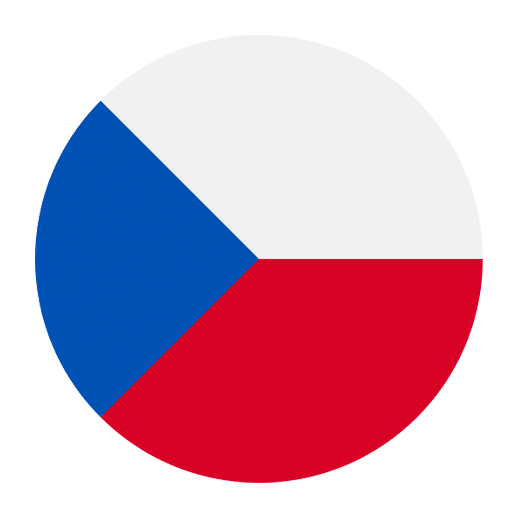Learning to talk about history in Czech can be a fascinating and enriching experience. The Czech Republic, with its rich and complex history, provides ample opportunities to explore a variety of historical topics, from medieval castles and the Bohemian Crown to the Velvet Revolution and modern-day developments. Understanding how to discuss these events in Czech will not only enhance your language skills but also deepen your appreciation of Czech culture and its historical context.
Basic Vocabulary for Discussing History
To start with, it’s essential to familiarize yourself with some basic vocabulary that will allow you to converse about historical topics. Here are some key words and phrases:
1. **Dějiny** (History)
2. **Historie** (Another word for history, often used interchangeably with “dějiny”)
3. **Událost** (Event)
4. **Období** (Period)
5. **Středověk** (Middle Ages)
6. **Renesance** (Renaissance)
7. **Baroko** (Baroque)
8. **Osvícenství** (Enlightenment)
9. **Moderní doba** (Modern era)
10. **Revoluce** (Revolution)
11. **Válka** (War)
12. **Král** (King)
13. **Královna** (Queen)
14. **Císař** (Emperor)
15. **Císařovna** (Empress)
16. **Hrad** (Castle)
17. **Zámek** (Chateau)
18. **Bitva** (Battle)
19. **Smlouva** (Treaty)
20. **Zákon** (Law)
With these terms, you can begin to construct basic sentences and engage in simple conversations about history.
Creating Simple Sentences
Once you have the basic vocabulary down, the next step is to start forming sentences. Here are a few examples to get you started:
– **”Středověk byl velmi důležitým obdobím v dějinách České republiky.”** (The Middle Ages was a very important period in the history of the Czech Republic.)
– **”V roce 1346 proběhla bitva u Kresčaku.”** (The Battle of Crécy took place in 1346.)
– **”V roce 1989 se konala Sametová revoluce.”** (The Velvet Revolution took place in 1989.)
– **”Pražský hrad je největší starobylý hrad na světě.”** (Prague Castle is the largest ancient castle in the world.)
As you can see, knowing the basic vocabulary allows you to construct meaningful sentences about historical events.
Historical Context and Key Events
To talk about history effectively, it’s crucial to have some understanding of the key events and periods in Czech history. Here are a few significant periods and events that are often discussed:
The Great Moravian Empire
The Great Moravian Empire (Velká Morava) was a Slavic state that existed from the 9th to the early 10th century. It played a crucial role in the development of Slavic culture and the spread of Christianity in Central Europe.
– **”Velká Morava byla první významnou slovanskou říší ve střední Evropě.”** (The Great Moravian Empire was the first significant Slavic state in Central Europe.)
The Bohemian Crown
The Kingdom of Bohemia (Království české) was a significant state in Central Europe from the 12th century until the early 20th century. It was a part of the Holy Roman Empire and later the Habsburg Monarchy.
– **”Království české bylo součástí Svaté říše římské.”** (The Kingdom of Bohemia was part of the Holy Roman Empire.)
The Hussite Wars
The Hussite Wars (Husitské války) were a series of conflicts in the early 15th century sparked by the execution of Jan Hus, a Czech religious reformer. These wars had a profound impact on the religious and political landscape of the region.
– **”Husitské války byly důsledkem upálení Jana Husa.”** (The Hussite Wars were the result of the burning of Jan Hus.)
The Habsburg Era
The Habsburgs ruled over the Czech lands from the 16th century until the end of World War I. This period saw significant cultural and political changes, as well as numerous conflicts, including the Thirty Years’ War.
– **”Habsburkové vládli českým zemím od 16. století do konce první světové války.”** (The Habsburgs ruled the Czech lands from the 16th century until the end of World War I.)
The Velvet Revolution
The Velvet Revolution (Sametová revoluce) in 1989 was a peaceful protest movement that led to the end of communist rule in Czechoslovakia. This event is a pivotal moment in modern Czech history.
– **”Sametová revoluce vedla k pádu komunistického režimu v Československu.”** (The Velvet Revolution led to the fall of the communist regime in Czechoslovakia.)
Discussing Historical Figures
Talking about historical figures is another essential aspect of discussing history. Here are some notable figures in Czech history and how to talk about them:
Charles IV (Karel IV)
Charles IV was one of the most important rulers in Czech history, serving as King of Bohemia and Holy Roman Emperor in the 14th century. He is known for founding Charles University in Prague.
– **”Karel IV. byl král český a císař Svaté říše římské.”** (Charles IV was the King of Bohemia and Holy Roman Emperor.)
– **”Založil Karlovu univerzitu v Praze.”** (He founded Charles University in Prague.)
Jan Hus
Jan Hus was a religious reformer whose ideas influenced the Hussite movement. He was executed for heresy in 1415, leading to the Hussite Wars.
– **”Jan Hus byl významný náboženský reformátor.”** (Jan Hus was an important religious reformer.)
– **”Byl upálen za kacířství v roce 1415.”** (He was burned for heresy in 1415.)
Tomáš Garrigue Masaryk
Tomáš Garrigue Masaryk was the first President of Czechoslovakia and a key figure in the country’s independence movement.
– **”Tomáš Garrigue Masaryk byl prvním prezidentem Československa.”** (Tomáš Garrigue Masaryk was the first President of Czechoslovakia.)
– **”Hrál klíčovou roli v boji za nezávislost.”** (He played a key role in the fight for independence.)
Václav Havel
Václav Havel was a playwright, dissident, and the last President of Czechoslovakia and the first President of the Czech Republic.
– **”Václav Havel byl dramatik a disident.”** (Václav Havel was a playwright and dissident.)
– **”Byl posledním prezidentem Československa a prvním prezidentem České republiky.”** (He was the last President of Czechoslovakia and the first President of the Czech Republic.)
Grammar and Sentence Structures
When discussing history in Czech, you will often need to use past tenses, particularly the past simple tense (minulý čas). Here are a few examples to illustrate how to use this tense:
– **”Karel IV. vládl ve 14. století.”** (Charles IV ruled in the 14th century.)
– **”Husitské války začaly v roce 1419.”** (The Hussite Wars began in 1419.)
– **”Sametová revoluce proběhla v roce 1989.”** (The Velvet Revolution took place in 1989.)
Additionally, using connectors and time expressions can help you create more complex sentences and narratives:
– **”Poté, co byl Jan Hus upálen, vypukly Husitské války.”** (After Jan Hus was burned, the Hussite Wars broke out.)
– **”Před první světovou válkou vládli českým zemím Habsburkové.”** (Before World War I, the Habsburgs ruled the Czech lands.)
Engaging in Conversations
When engaging in conversations about history, it’s helpful to ask questions and express opinions. Here are some useful phrases:
Asking Questions
– **”Kdo byl Karel IV.?”** (Who was Charles IV?)
– **”Kdy proběhla Sametová revoluce?”** (When did the Velvet Revolution take place?)
– **”Jaký byl význam Husitských válek?”** (What was the significance of the Hussite Wars?)
Expressing Opinions
– **”Myslím, že Karel IV. byl jedním z nejvýznamnějších českých králů.”** (I think that Charles IV was one of the most significant Czech kings.)
– **”Podle mého názoru měla Sametová revoluce obrovský dopad na moderní českou společnost.”** (In my opinion, the Velvet Revolution had a huge impact on modern Czech society.)
Additional Resources
To further improve your ability to discuss history in Czech, consider utilizing the following resources:
Books and Articles
Reading books and articles about Czech history in both English and Czech can provide valuable context and vocabulary. Some recommended titles include:
– “A History of the Czech Lands” by Jaroslav Pánek and Oldřich Tůma
– “Czech History: A Chronological Overview” by Jan Klápště
Documentaries and Films
Watching documentaries and historical films can help you improve your listening skills and gain a better understanding of historical events. Consider watching:
– “The Burning Bush” (Hořící keř) – A miniseries about Jan Palach, a student who self-immolated in protest of the Soviet invasion.
– “Dark Blue World” (Tmavomodrý svět) – A film about Czech pilots during World War II.
Museums and Historical Sites
If you have the opportunity to visit the Czech Republic, exploring museums and historical sites can provide a hands-on learning experience. Some notable places include:
– The National Museum (Národní muzeum) in Prague
– The Museum of Communism (Muzeum komunismu) in Prague
– The battlefield of the Battle of White Mountain (Bílá hora)
Conclusion
Talking about history in Czech involves not only mastering specific vocabulary and grammar but also understanding the cultural and historical context. By familiarizing yourself with key events, historical figures, and common phrases, you can engage in meaningful conversations about Czech history. Use the resources available to you, practice regularly, and immerse yourself in the rich historical tapestry of the Czech Republic. Happy learning!

